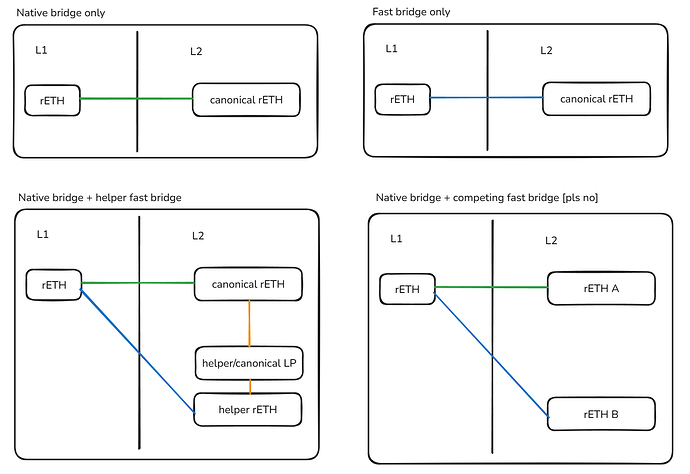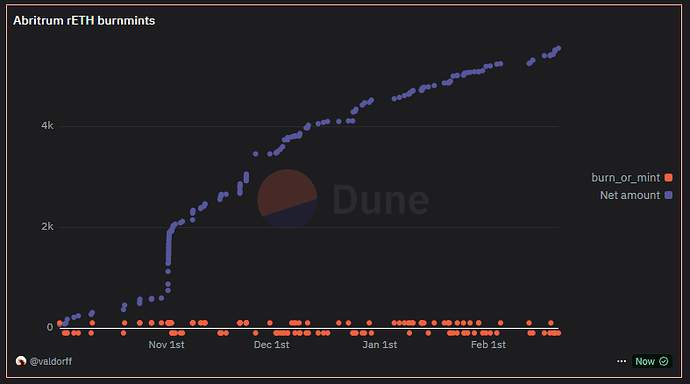Gm Rocket Pool community,
A message from your Depressed Bankrupt Director,
Ronin and Avalanche are exploring the idea of minting rETH and bridging the LST to their chain. Ronin has expressed minting $3M USD in rETH to bootstrap liquidity on their chain and slowly mint more with the success of the campaign. This would be highly beneficial for rETH as it will have a first mover advantage of a ETH LST on these chains. I propose the DAO should create the rETH contract address (CA) on all new chains rETH is implemented in going forward.
Currently Ronin’s new canonical bridge will be Chainlinks CCIP and Avalanche will not be adding new tokens to their canonical bridge. It would benefit the DAO to own the CA of rETH on each destination chain because it will allow the DAO to choose which bridges have permission to mint rETH and avoid rETH liquidity fragmentation. For example, currently the DAO does not own the CA on Arbitrum, this has essentially created a slow bridge (canonical) and a fast bridge (Hop Protocol), this has created liquidity fragmentation which requires LP management by the bridges. If the DAO owned the CA of rETH on each chain it would have the governance power to approve/deny bridges that could mint rETH on the destination chain.
Image provided by @Valdorff
AlphaGrowth is working on a bridge campaign to allow a small fee to be charged on all rETH volumes going through bridges. This small fee would go back to the DAO to help fund itself other than RPL inflation. It is important for the DAO to develop a strategy that does not allow the fee to be circumvented by another bridge or bridge aggregator. Allowing the DAO and the governance process to create and have control of the CA on each chain would be the first step to this campaign.
While meeting with bridge providers and talking to community members, @Valdorff had proposed looking into using xERC-20 smart contract for rETH. The xERC-20 is not a standard adopted by the Ethereum ecosystem or wider crypto community and might prove difficult to implement. Moreover, the xERC-20 is not something that is out of the box ready for adding fee implementations for bridge volumes.
However, the xERC-20 does have some benefits such as, allowing the DAO to approve or deny which bridges rETH can be bridged on, essentially doing this on ETH mainnet rather having to do this for each chain. The DAO would also be able to stop flows per chain and set rate limits per chain. The smart contract would create a 1:1 token of rETH, essentially locking the rETH in the smart contract and then minting rETH in the destination chain, no need for Liquidity Pools.
I would also like to start a community call campaign with @ken to have different bridges speak to the community on their tech and why protocols have been using them.
In conclusion while the DAO starts the bridge community call campaign and the debate on what bridging strategy is best for rETH. The short term solution would be for the DAO to create the CA of rETH on the following new chains, Ronin and Avalanche. Below are the following options I believe are available to Rocket Pool, please vote which path you think would be most beneficial for Rocket Pool and rETH.

